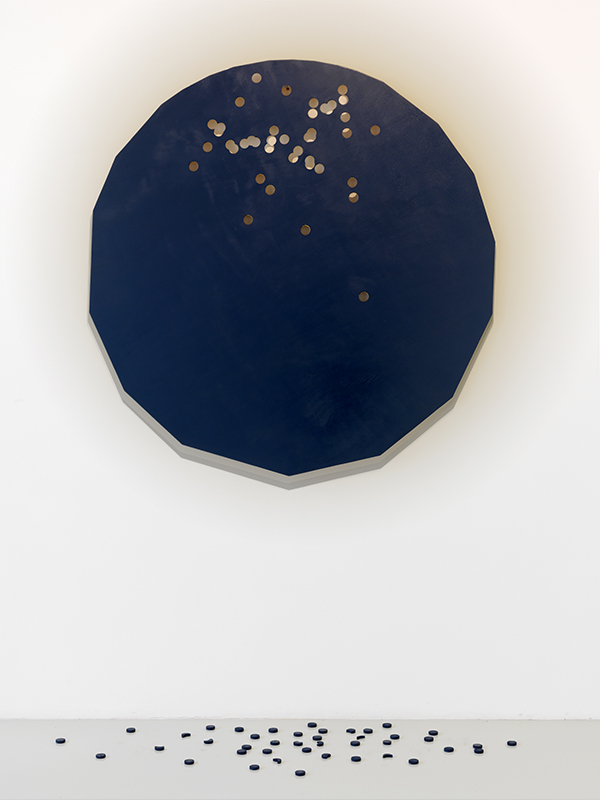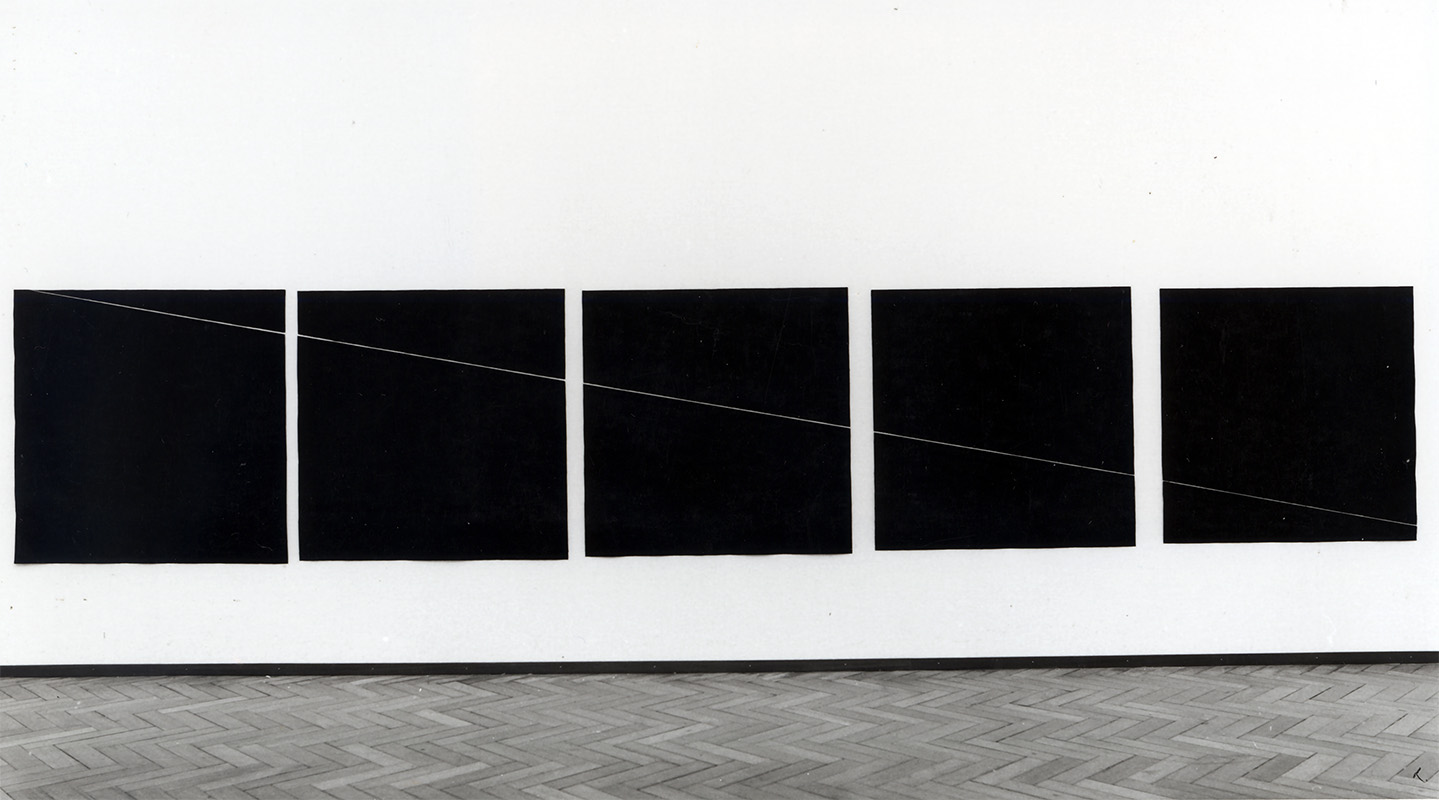

Photo: Tom Haartsen
Gift Maria van Elk (2011)
| Lose one's balance arose during the search for perfect balance.
The work shows a process, which in its final logical, outcome means the physical disappearance of the object. The same occurs in the object Enlargement-Reduction (1976), collection Van Abbe Museum Eindhoven. * The object, which was originally a circle, had perfect balance without top or bottom. The moment a hole was cut to hang the object, the effect of gravity became visible. In search of the middle and a new centre of gravity, many lines were drawn. Crossing each other, they run over the perimeter of the surface and into space. These lines cluster at the top and are further apart at the bottom. Together they create a series of intersections on the object. Intersections become points of balance. Points of balance become points of gravity that fall at random on the floor. A visible pattern of holes remain while the lines are unseen. Intersections become corners. Drawing straight lines connects the intersections with the edges of the circle. This creates an asymmetric polygon, while the circle remains perceptible. The object swings, sensitive to air movement, free of the wall, on ONE of the balance points.> The dark blue - almost black - colour isolates the object from its surroundings and creates the impression of weight. The reflection on the wall of the soft yellow rear side (visible also through the holes) intensifies the impression of a floating object. Maria van Elk, 2014 |
Stedelijk Museum Schiedam – Cool!
|
.jpg)
Maria van Elk with Point of Balance(1986)
Photo: Ferry André de la Porte
* Enlargement - Reduction (1976)
Black oil pastel on white canvas
7.50 x 1.50 meter

Photo: Rob Versluys, Stedelijk Museum Amsterdam (1980)
Exposition: Tekenen 1973-1980 (Drawing 1973-1980)
Collection Van Abbemuseum Eindhoven, gift An and Martien de Voigt (2012)